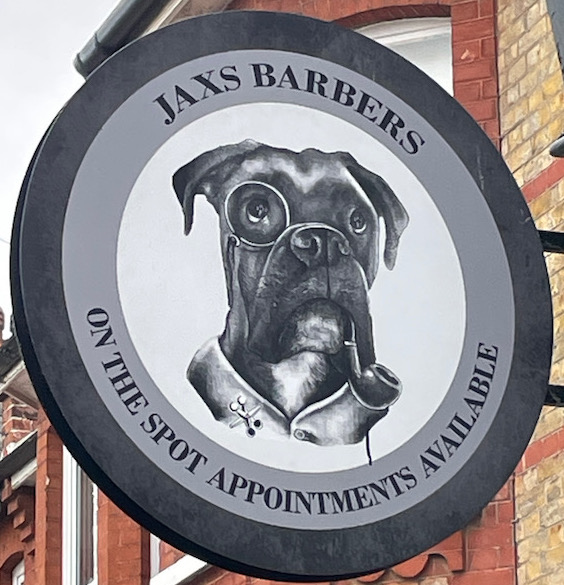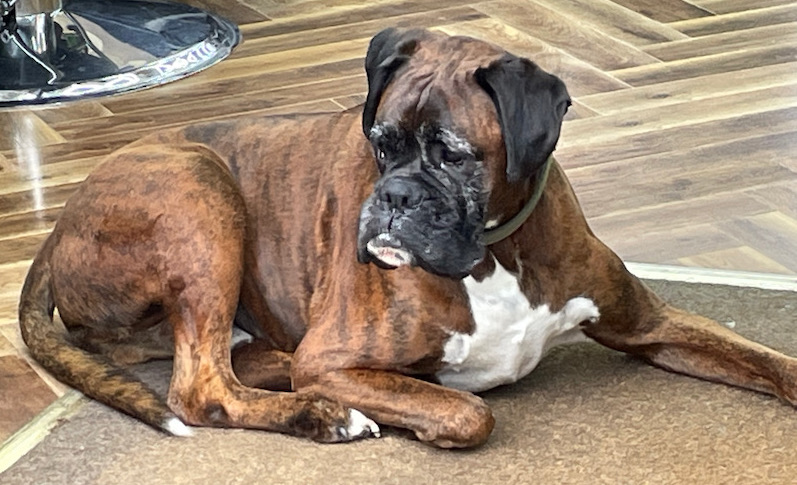Our Blog - Summer 2024 Trip - Broadstairs, England
We found a nice "holiday home" in Broadstairs, a coastal town on the Isle of Thanet in Kent. The Isle of Thanet is not an island anymore, but a peninsula that was formed when the 2000-foot-wide Wantsum Channel gradually silted up with the last ship going through in 1672. It was a seaside resort and even the young Princess Victoria and her mother, the Duchess of Kent, were summer visitors 1826–1836. Charles Dickens visited Broadstairs regularly from 1837 until 1859 and wrote several of his stories here, including David Copperfield.
One of the great things about our holiday home was, while it was on a residential street (so fairly quiet), it was a 5-minute walk to downtown and to the beach. While the main beach was people-only, there was a huge beach that was puppy-friendly and so we headed down there almost every day. Some days, we threw Lucy's new floater tool in the water and she went in to retrieve it, other days we played with the ball.
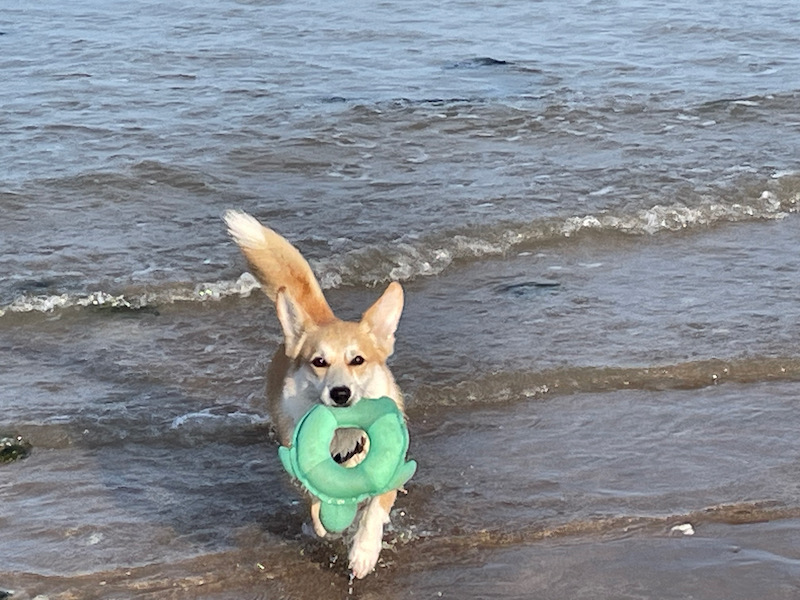
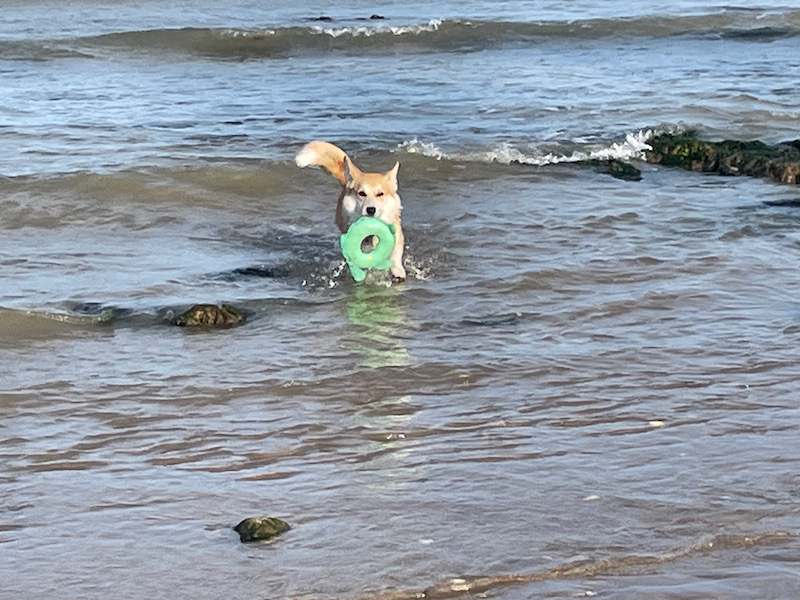
Remember this picture ... I will show another one later that you can compare to this (although not exactly the same picture). You can see the wall, and the stairs in the back-right that end with a platform.
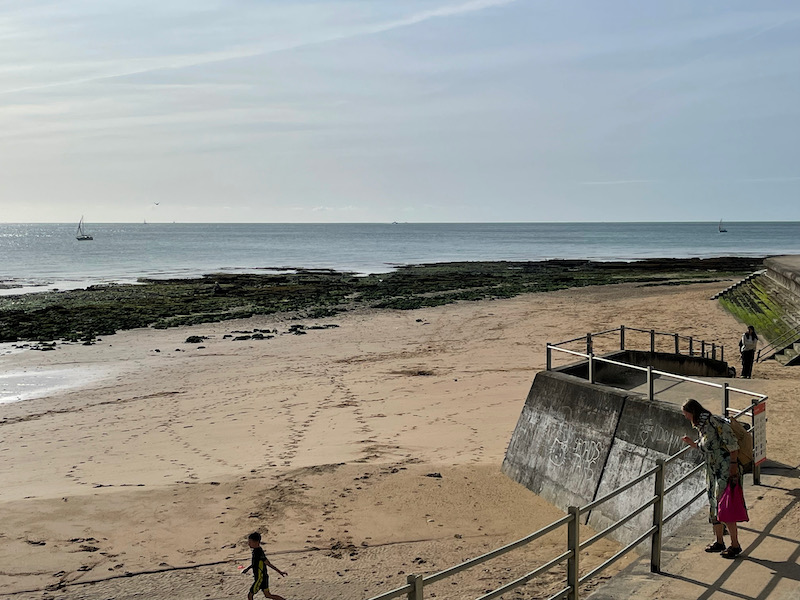
We walked through the Victoria Gardens to see the Clock Tower. It was originally built in 1897 in honor of Queen Victoria's diamond jubilee, it was rebuilt in the 1970s after a fire to commemorate Queen Elizabeth II's silver jubilee in 1977. In my opinion, it needs some additional work because it wasn't looking that good.
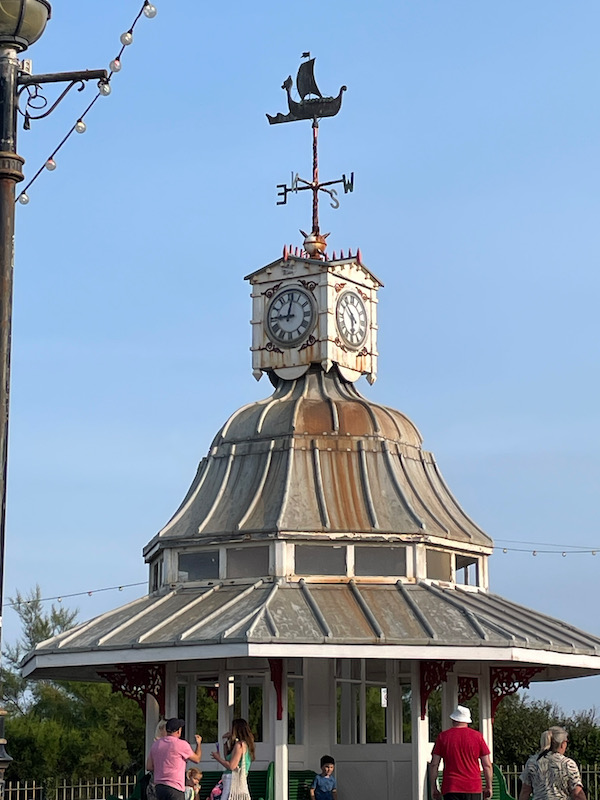
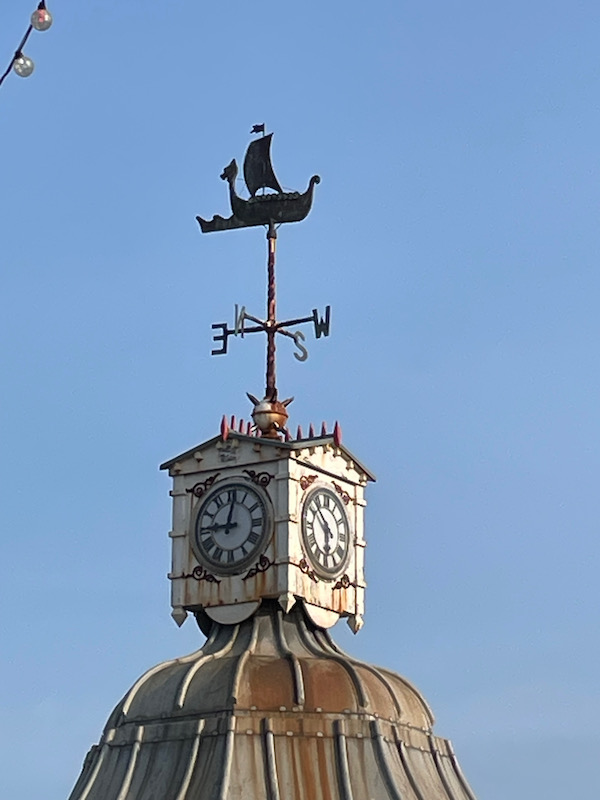
We then were able to take a peek at Viking Bay and Viking beach. It was originally called Main Bay and renamed for the 1500th anniversary of the landing here of the Viking's Hengist and Horsa in 449. It is one of 7 beaches in town but this one is people-only, so this was basically as close to the beach as we went. These were at pretty low tide, as you can see how shallow the water actually is and the amount of stones/moss that you can see on the right side. In the 3rd picture is an interesting thing ... the square thing is the Viking Bay paddling pool, which is a man-made tidal pool that is visible only at low tide.
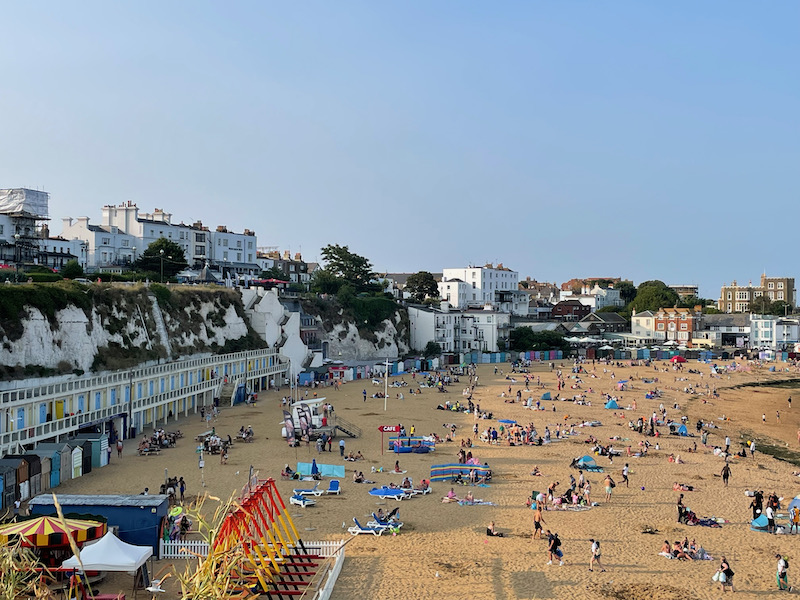
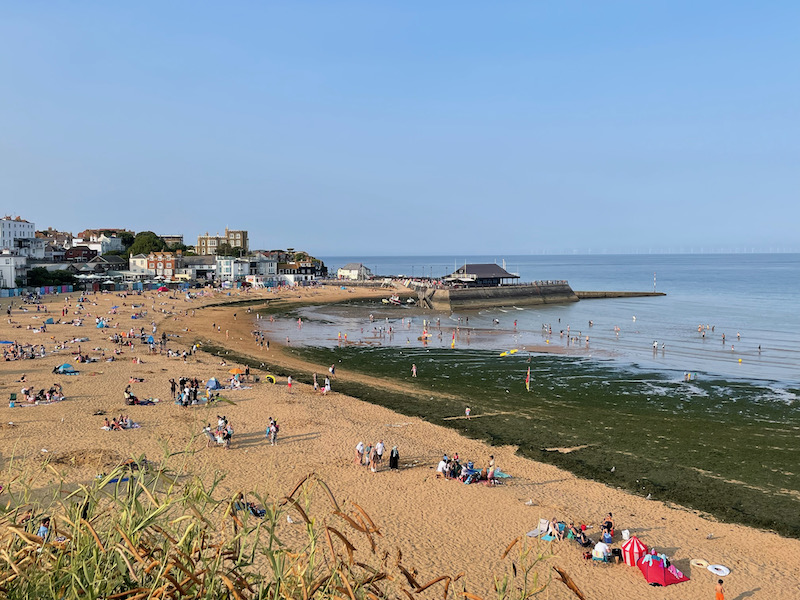
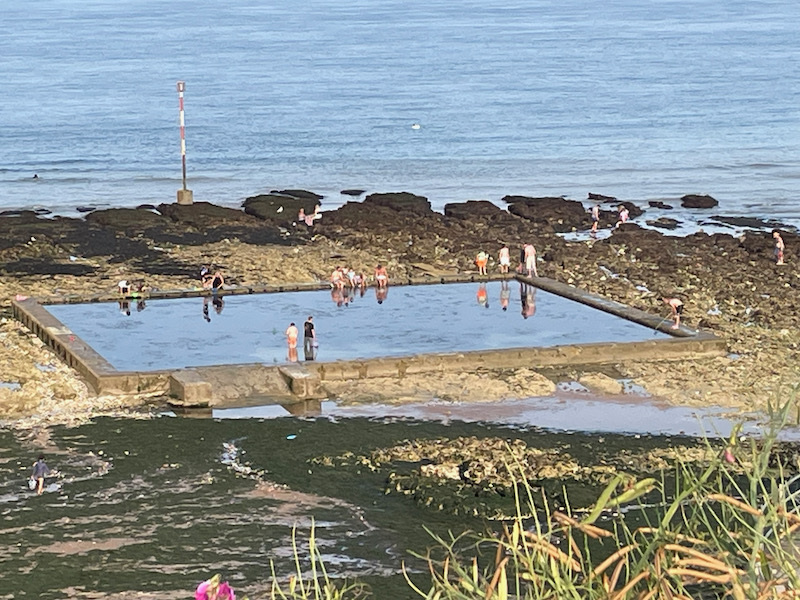
The town and its sites are heavily linked to Charles Dickens. We did a tour of various sites in town, and then also did a walking tour provided by the Dickens House Museum to follow in the footsteps of Charles Dickens. Interestingly enough, many of the same sites were visited. Dickens was 25 and already famous when came here and wrote chapters of his first novel, The Pickwick Papers. Over the next 25 years, he visited Broadstairs 19 times, with his last visit in 1862. He wrote parts of 9 of his 15 novels here and stayed in a variety of rental houses with his wife and children. The Broadstairs of today is a very different place from when Dickens first stayed here in 1837, when it was a fishing village with a population fewer than 1,500, and cows grazed on the clifftops above the bay.
The Royal Albion hotel started life in 1706 as The Phoenix hotel and renamed in 1805 following the Battle of Trafalgar. Dickens was a regular customer here and was particularly fond of the gin sold by the then landlord James Ballard.
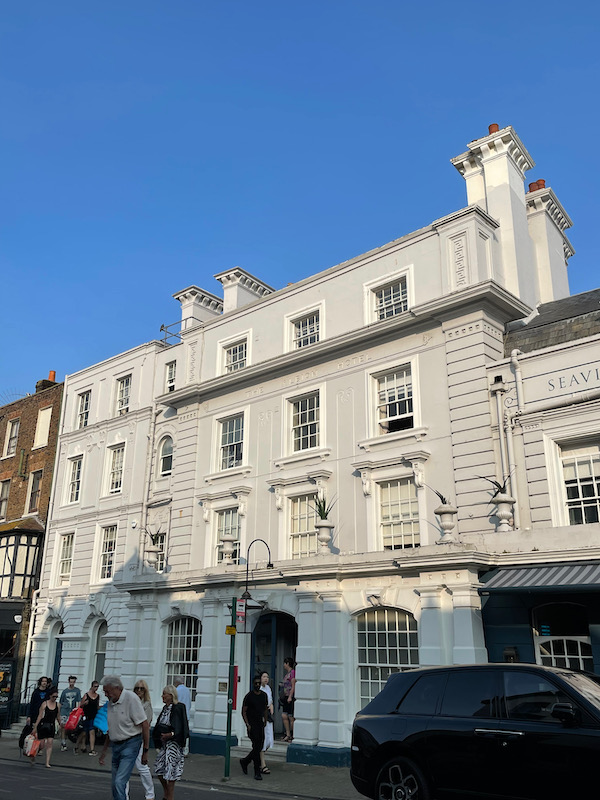
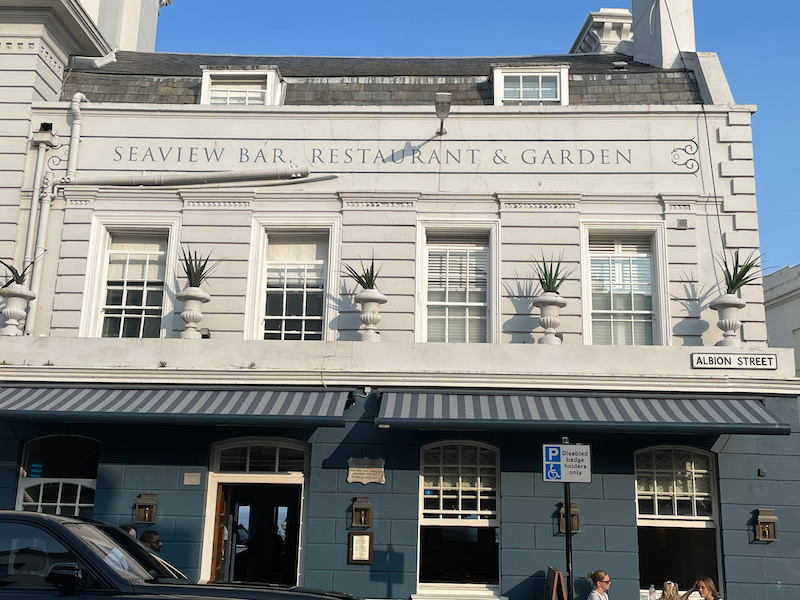
The Old Curiosity Shop building was originally 2 cottages with a well which served the houses of Union Square and may have been built in 1588.
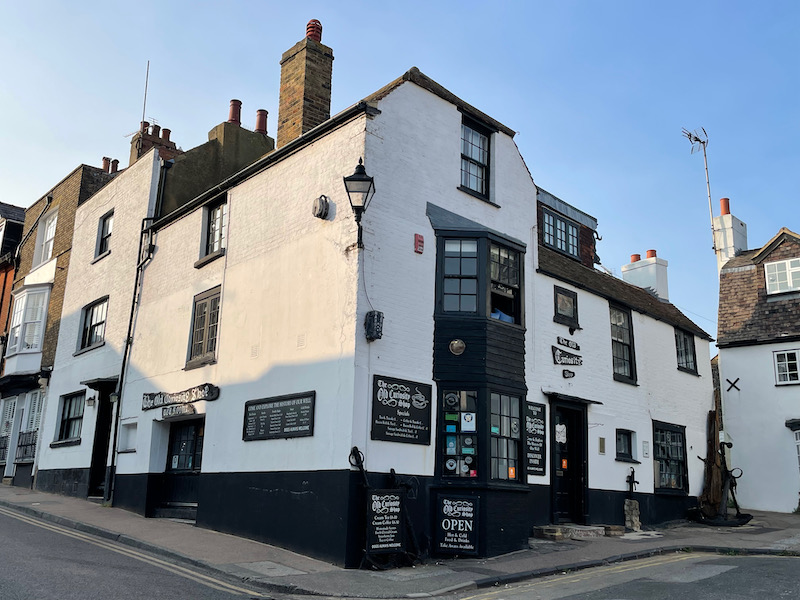
The York Gate dates back to 1540 and was built to defend the town against privateers. The original structure had a portcullis and stout wooden gates.
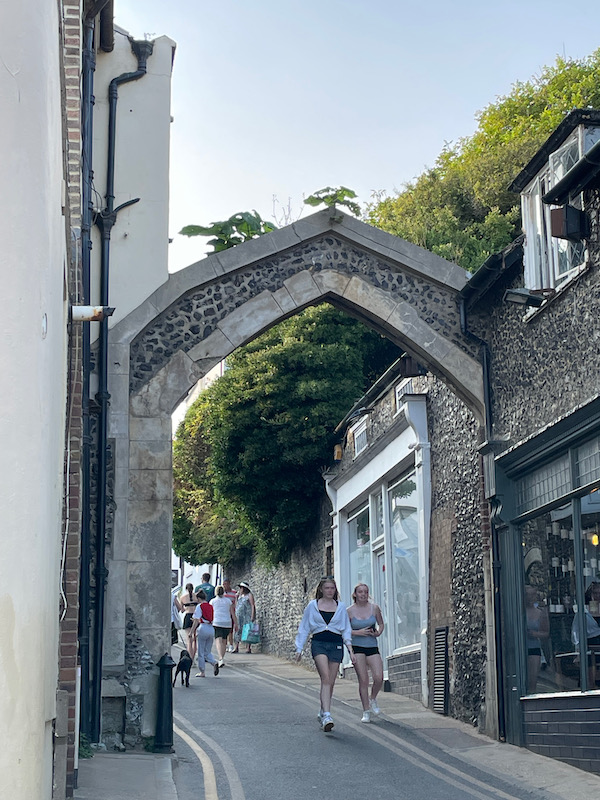
This castle-looking house is called Bleak House although it used to be known as Fort House. It was built in 1801 as a private residence, and in later years used by Charles Dickens as a holiday home.
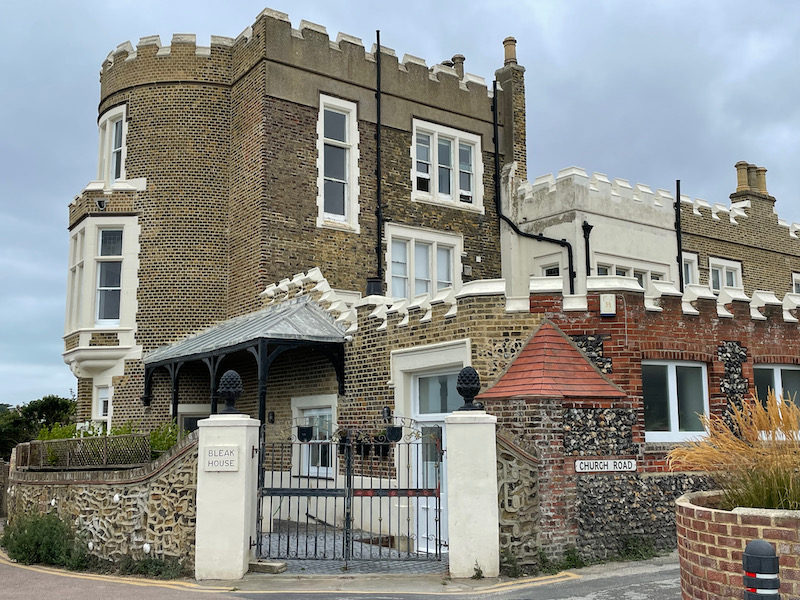
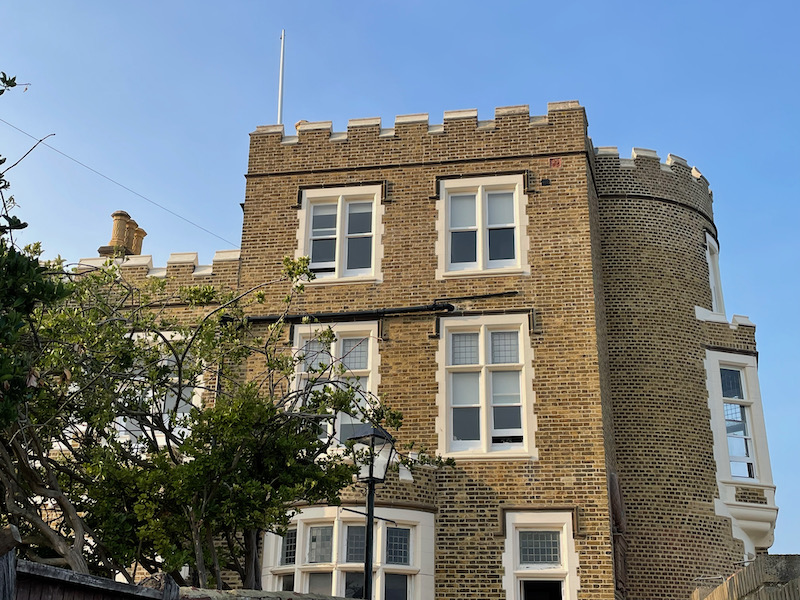
What says that it is St Mary’s Chapel from 1601 is no longer St Mary's Chapel. Built on the site of Our Lady of Bradstow’s Shrine, it is the oldest structure in Broadstairs, dating back to Saxon times. The original wooden chapel was rebuilt around 1070 in stone and flint and some of the original structure remains within the current building. After being badly damaged in storms in the 1520s, the building was restored for Protestant worship in 1601. Today, it is a bar with lots of books on a wall. There are still some telltale signs of the former chapel, like the wood paneling and a box for hymnals.
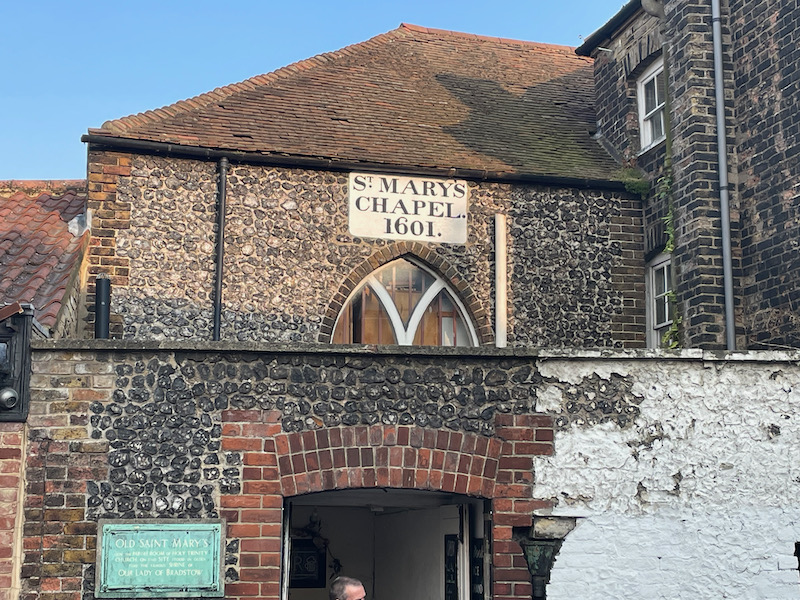
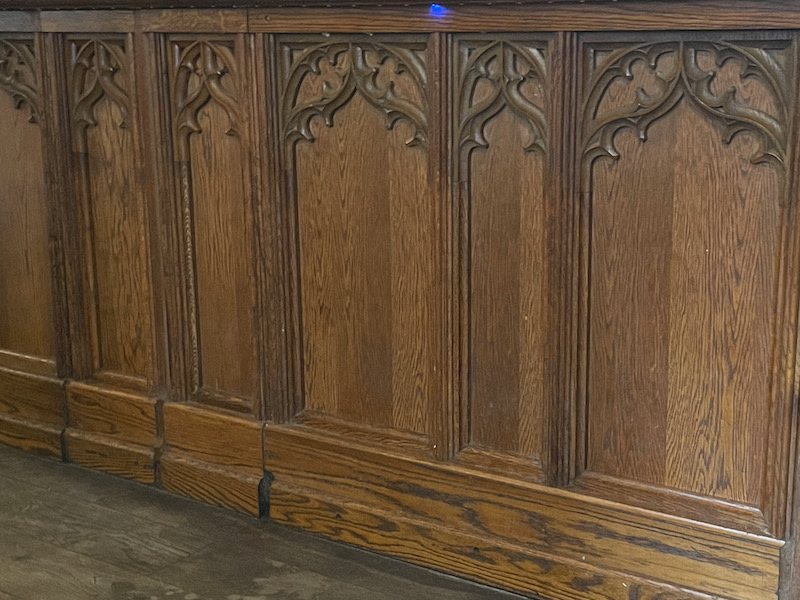
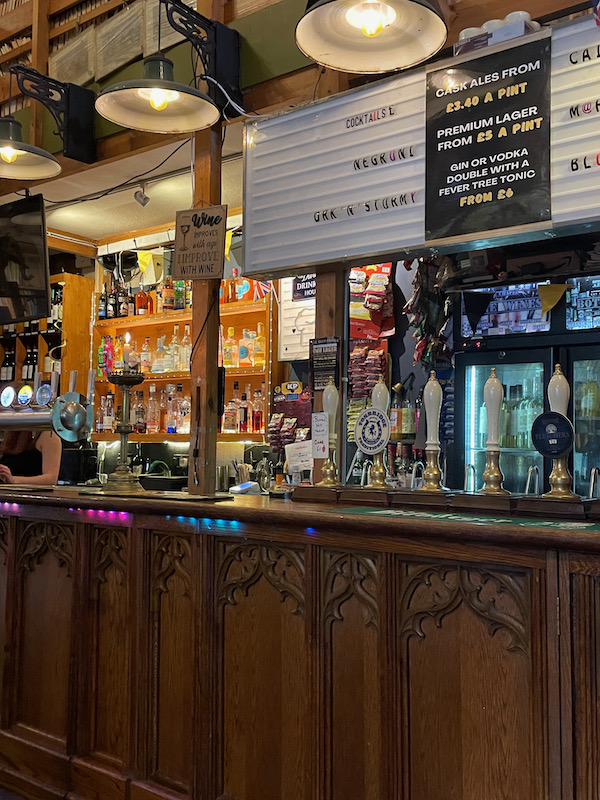
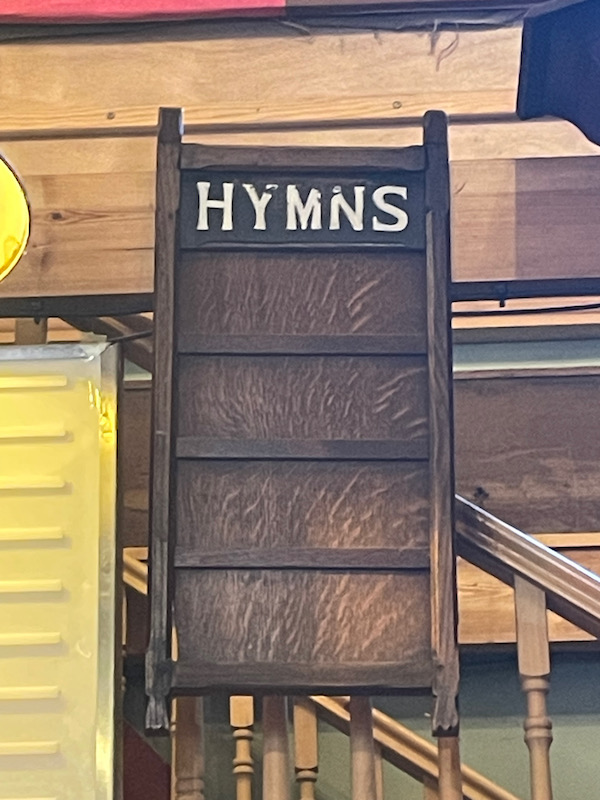
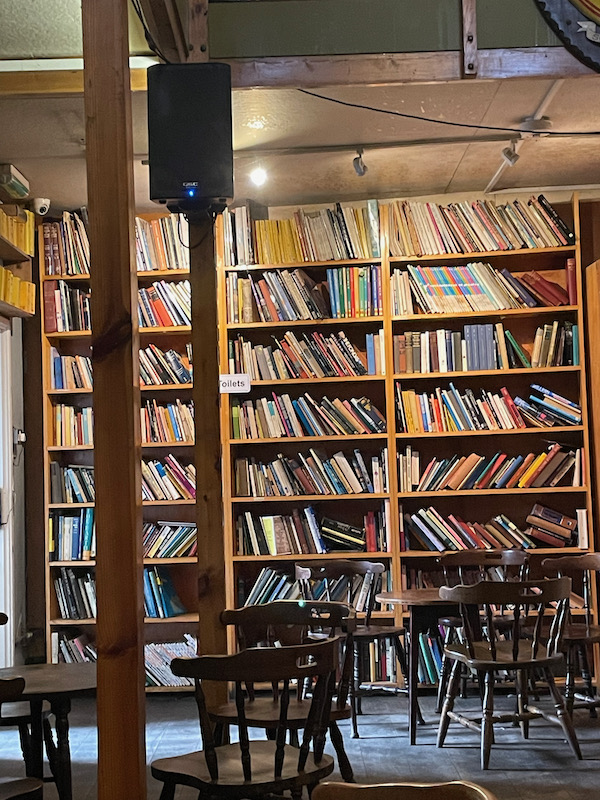
This is the same place that Lucy was playing ... but at high tide. You can see how, looking just over the green bushes in the middle of the picture, the waves are all the way up to the low wall where the stairs in the earlier picture was ... no beach at all.
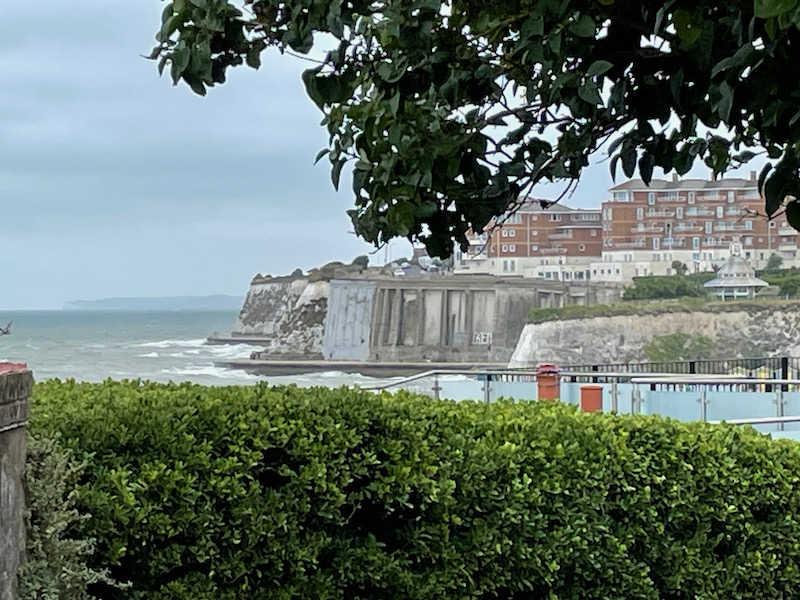
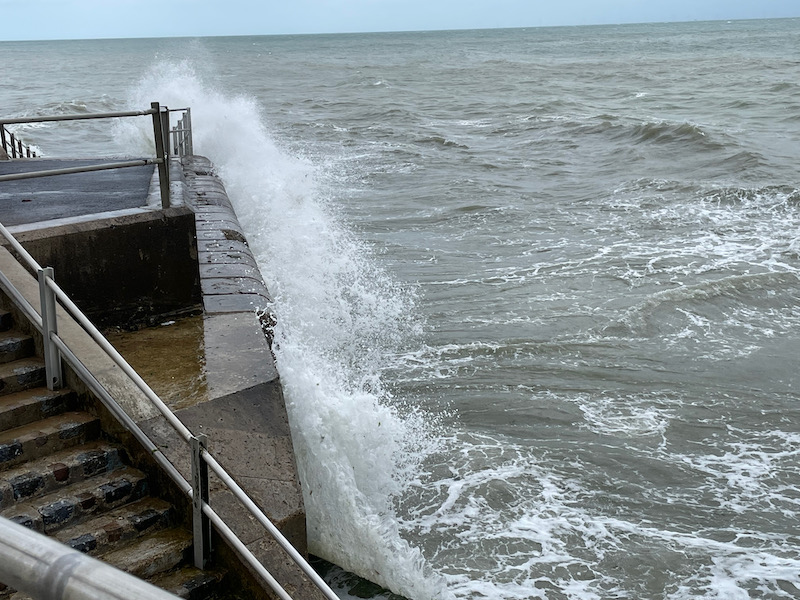
And here is a comparison with Viking Bay (looking from the cliff on the far side) ... there are no rocks/moss visible and no paddling pool either at high tide.
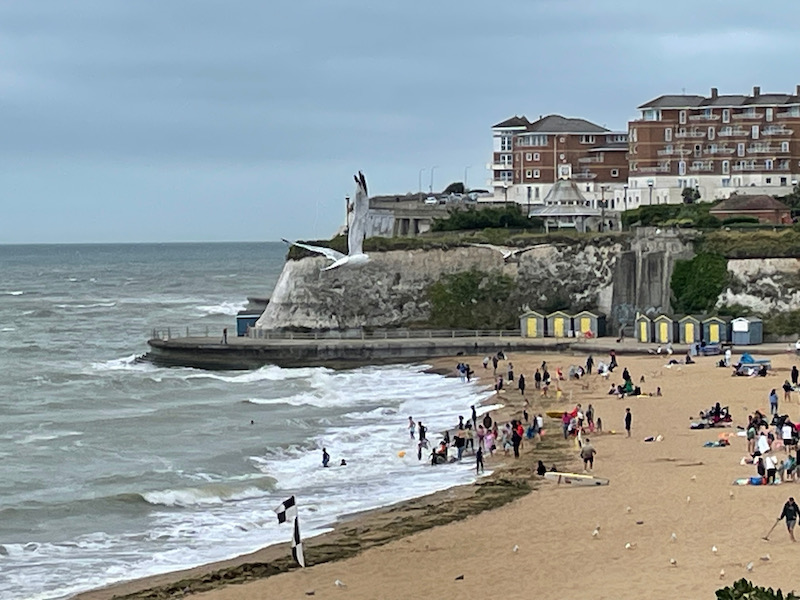
The Dickens House Museum is housed in the former home of Mary Pearson Strong, upon whom Dickens based his character Betsey Trotwood in David Copperfield. Dickens had made friends with her and spent quite a bit of time in the house, talking with her. In addition to the character of Betsey Trotwood, various scenes in his stories are based on real-life things that happened here.
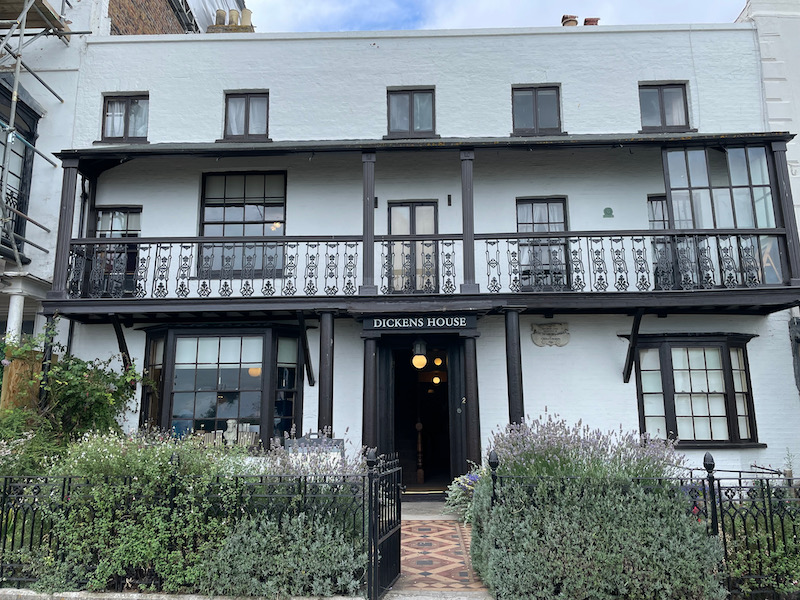
This is a reconstruction of Betsey Trotwood's parlor as described by Charles Dickens in Chapter 13 of his book David Copperfield.
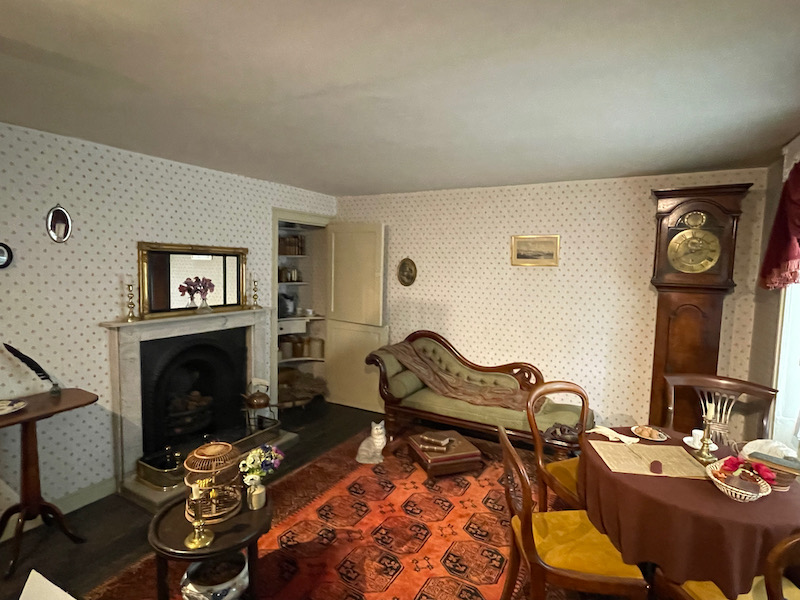
There was also a desk that Charles Dickens owned and used, as well as originals of his early works. This one is called "Dombey and Son" and was originally published in 19 monthly installments between 1846 and 1848. Each cost one shilling except for the last, which cost two shillings, being a double issue. It was then reissued as a single volume in 1848.
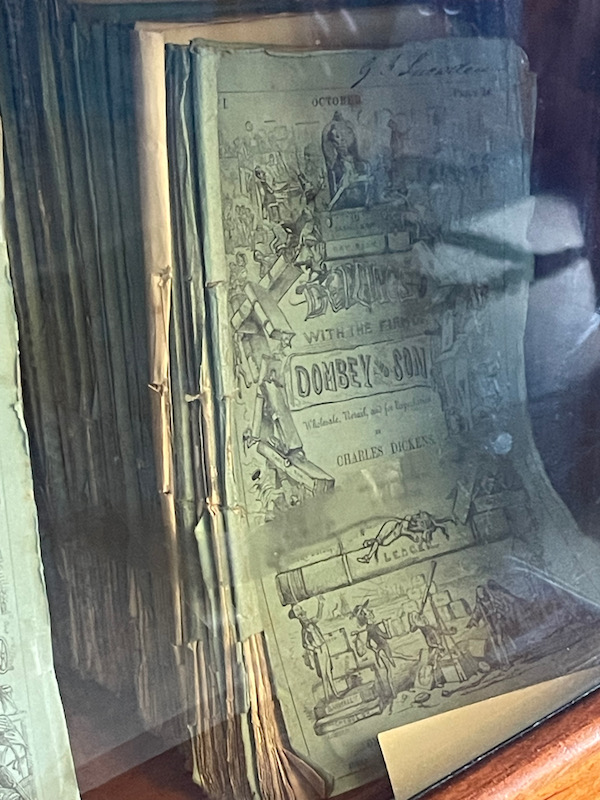
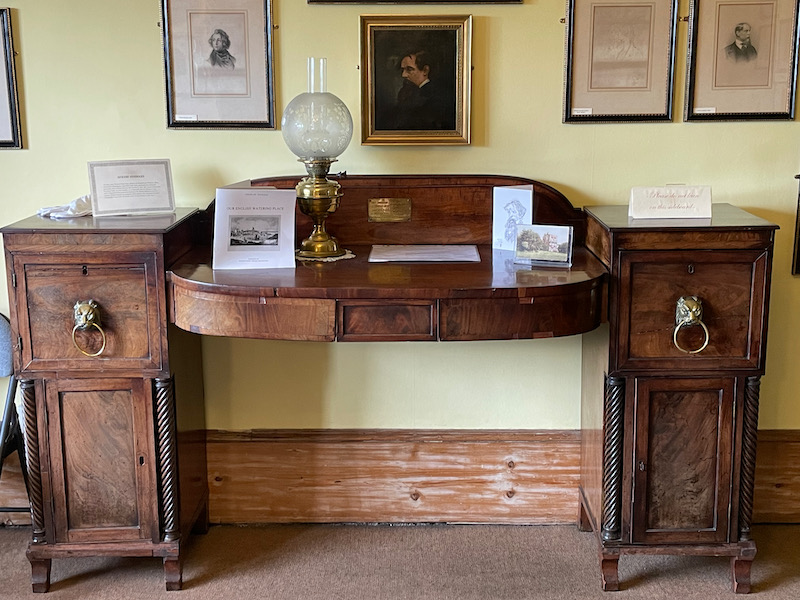
And this one is just hilarious .... every time we walked by the barbershop ... Jax was there, checking out everyone who walked by.
